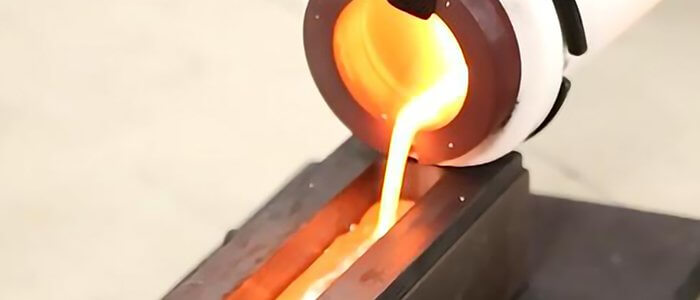Introduction
The art of casting has a rich history dating back thousands of years, with gold being one of its most treasured materials. Gold has held a special place in casting due to its unique properties, making it an indispensable material for creating intricate jewelry, sculptures, and various other items.
The Properties of Gold
Gold possesses several remarkable properties that make it ideal for casting:
Malleability and Ductility: Gold is one of the most malleable and ductile metals known to humanity. These properties enable artisans to shape it into intricate designs and create fine details, making it a favorite for crafting intricate jewelry.
High Melting Point: Gold’s high melting point, at around 1,948 degrees Fahrenheit (1,064 degrees Celsius), ensures that it can withstand the casting process without losing its luster or integrity.
Excellent Heat Conductivity: Gold’s exceptional heat conductivity allows it to distribute heat evenly during the casting process, reducing the risk of uneven cooling or cracking.
Corrosion Resistance: Gold is highly resistant to corrosion, ensuring that cast gold items maintain their beauty and durability over time.
The Techniques of Gold Casting
There are various techniques for casting gold, each tailored to specific applications and desired outcomes. The two primary methods are:

Lost Wax Casting (Investment Casting):
The most common technique for casting intricate gold jewelry and small sculptures.
A wax model of the desired item is created and encased in a refractory mold material.
The wax is melted or “lost” from the mold, leaving a cavity in the shape of the item.
Molten gold is poured into the cavity, filling the space left by the wax.
After cooling, the mold is broken, revealing the solid gold object, which is then polished and finished.
Sand Casting:
Used for larger gold sculptures and less intricate items.
A mold is created by packing sand around a pattern of the desired object.
Molten gold is poured into the mold, taking the shape of the pattern.
Once cooled, the sand mold is removed, and the gold piece is refined and polished.
The Significance of Gold Casting
Gold casting is an ancient art form that has played a significant role in human history and culture:
Cultural Significance: Gold has been revered across cultures as a symbol of wealth, power, and beauty. Casting gold into intricate jewelry and sculptures has been a way to showcase craftsmanship and artistry.
Economic Importance: The production of gold jewelry through casting has been a major economic driver in many regions, providing employment for artisans and contributing to the global economy.
Preservation of Heritage: Gold casting techniques are often passed down through generations, preserving cultural and artistic heritage.
Versatile Applications: Gold casting is not limited to jewelry and art; it has practical applications in various industries, including dentistry and electronics.
Conclusion
The role of gold in casting is a testament to the enduring allure of this precious metal. Its unique properties, such as malleability, high melting point, and corrosion resistance, make it an exceptional choice for creating intricate jewelry, sculptures, and other items through techniques like lost wax and sand casting. Beyond its technical attributes, gold casting carries cultural and economic significance, enriching our world with its timeless brilliance. This ancient craft continues to captivate and inspire artisans and enthusiasts alike, ensuring that gold casting remains a treasured tradition for generations to come.


